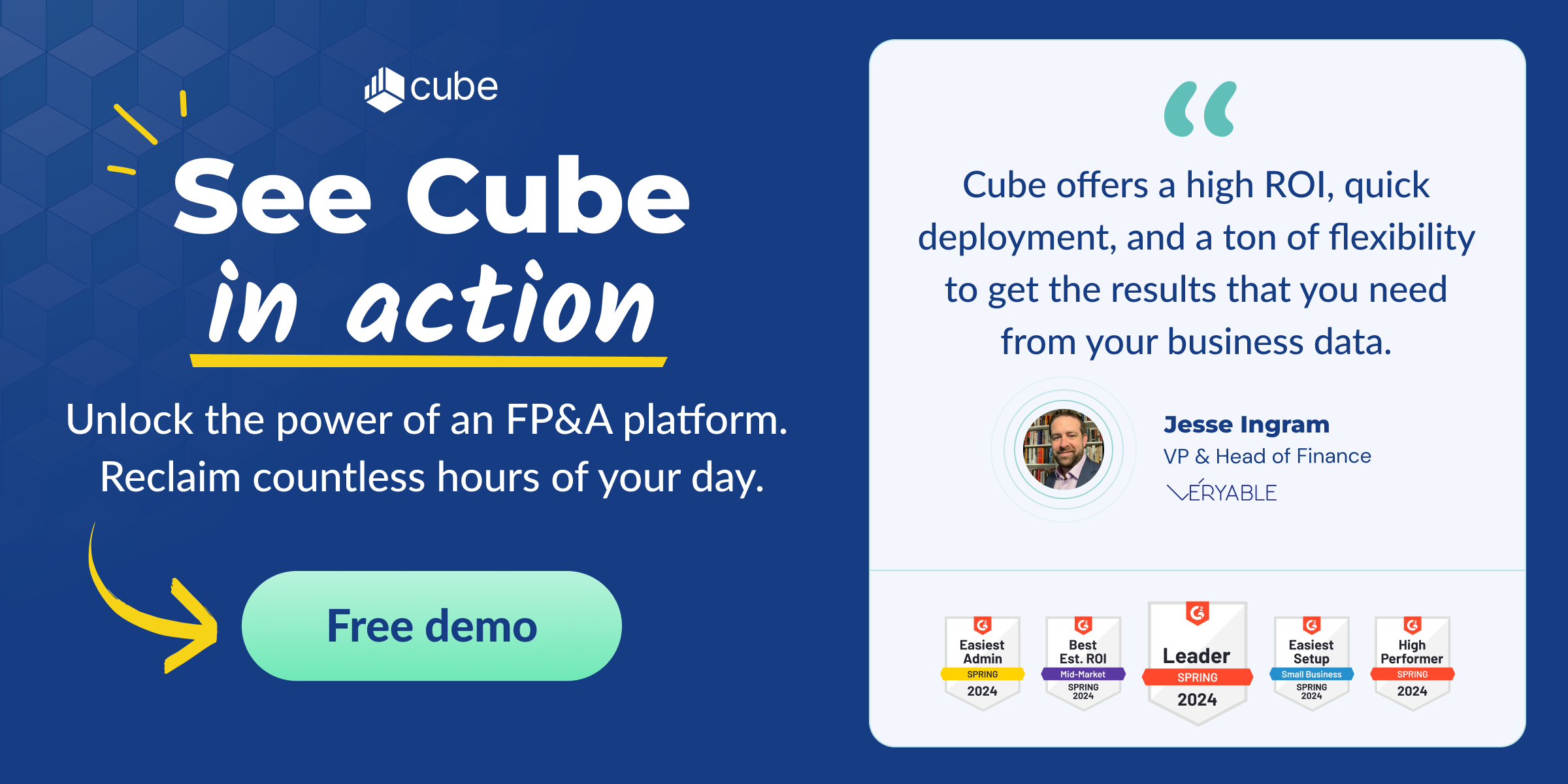Criteria for selecting financial projection software
Financial projection software is a tool or platform designed to help businesses forecast their future financial performance based on historical data, current trends, and various assumptions about the future. These software solutions allow users to model different financial scenarios, assess potential outcomes, and make informed decisions about their business strategies.
To achieve the desired benefits, selecting the right financial projection software is essential. The ideal solution should not only streamline financial planning processes but also provide deep insights into financial forecasting and operational planning.
Here’s an expanded look at the essential criteria to guide your selection:
- Ease of use: The user interface should be intuitive, minimizing the learning curve for new users. Look for budgeting and forecasting software that offers a clean, navigable dashboard and straightforward functionality to facilitate quick adoption across your team.
- Integration capabilities: Seamless integration with existing financial systems, ERPs, CRMs, and data analytics tools is crucial. This ensures that financial data flows smoothly between systems, enhancing the accuracy of your financial forecasts and reducing manual data entry errors.
- Scalability: As your business grows, your financial planning needs will become more complex. The chosen software must be able to scale with your organization, handling an increasing amount of data and more sophisticated financial models without significant performance degradation.
- Reporting tools: Comprehensive reporting capabilities are vital for insightful financial reports. Look for software that offers customizable report templates, the ability to handle various financial metrics, and the flexibility to adapt reports to different stakeholder needs.
- Customer support: Robust customer support, including access to training resources, user communities, and direct support channels, is essential. This ensures you can quickly resolve any issues and make the most of the budgeting and forecasting software’s capabilities.
- Software flexibility: The software should cater to a wide range of financial modeling needs, from straightforward budgeting and forecasting to complex scenario planning and corporate performance management. Flexibility in handling different financial scenarios and what-if analyses is key to adapting to changing business conditions.
- Data accuracy and security: Ensuring the integrity and security of your financial data is crucial. The software should offer strong data validation features and secure access controls to protect sensitive financial information.
- Collaboration features: The software should support collaborative planning processes and allow for easy sharing and review of financial plans and forecasts.
- Customization options: Every business has unique financial planning needs. The ability to customize the software to fit your specific processes, financial models, and reporting requirements is essential for maximizing its value.
- Cost-effectiveness: Finally, consider the total cost of ownership, including licensing fees, implementation costs, and any additional expenses for training or customizations. The software should offer a good return on investment by improving financial planning efficiency and accuracy.
By carefully evaluating these criteria, you can choose a financial projection software solution that best meets your organization’s needs, supports strategic decision-making, and drives business growth.

The top 5 financial projection software solutions
Nowadays, financial planning and analysis (FP&A) leaders are seeking the most efficient and effective forecasting tools to elevate their financial forecasting and operational planning capabilities.
The following five financial projection software solutions have been carefully selected based on their comprehensive features, integration capabilities, scalability, and customer support excellence. Each budgeting and forecasting software solution offers unique attributes that cater to various business sizes and types, ensuring you can find a tool that aligns with your specific needs.
1. Cube
.png?width=366&height=106&name=blue-cube-logo%20(1).png)
The cloud-based FP&A software platform helps finance teams work anywhere, integrating natively with both Excel and Google Sheets, so you can plan, analyze, and collaborate with the ultimate speed and confidence. With Cube, you can minimize manual work, speed up workflows, and glean real insights fast with automated processes. Plus, its adaptable data framework empowers you to grow and scale your business while maintaining control of increasingly complex data.
Key features:
- Spreadsheet-native interface: Cube is compatible and bi-directional with any spreadsheet, including Excel and Google Sheets.
- Cloud infrastructure: Access your data from anywhere and work where you want. Easily collaborate with stakeholders, build reports and dashboards with greater flexibility, and keep everyone on the same page.
- Detailed audit trail: Access an audit trail in the Cube platform and directly from your spreadsheet so you can keep your data clean and governed to your rules.
- Model agnostic: Avoid using detailed, difficult formulas to pull your data. Use your own models and store formulas in the cloud for lightning-fast processing.
- Single source of truth for data: Connect multiple systems to one source of record.
- Dashboard creator: See and explore your data your way. Easily access, filter, and visualize data to make better decisions, faster.
- Report builder: Share static reports like budgets and headcount directly from Cube to keep everyone aligned.
- Unlimited multi-scenario planning: Evaluate what-if scenarios, assess the potential impact of different variables on your financial outcomes, and make agile decisions to navigate uncertainties in the business environment.
- Monthly/quarterly forecasting: Generate accurate and timely forecasts to adapt to changing market conditions, identify emerging trends, and make proactive decisions to steer your organization toward financial success.
- Sales forecasting: Accurately project future sales based on historical data and market trends, allowing you to align resources, set realistic targets, and optimize your sales strategies. Stay ahead of market dynamics with precise and data-driven sales forecasts.
Ideal for: Cube is best suited for mid-sized businesses looking for flexibility and greater ease of use in their financial projection software.
Pricing: Cube offers multiple pricing tiers based on company and size, FP&A needs, and advanced integrations, starting at $1,500/month for lean finance teams and $2,800/month for companies looking to scale.
2. Prophix

Prophix streamlines financial processes with robust analytics, budgeting, and forecasting tools, aiming to enhance visibility and decision-making.
Key features:
- Facilitates financial modeling and scenario analysis.
- Offers data visualization and integrates with ERP/CRM systems.
- Provides real-time reporting and dashboarding capabilities.
Ideal for: Medium to large enterprises needing detailed financial planning and analysis.
Pricing: Customized based on client needs; industry sources note pricing aligns with market averages.
3. Jirav

Jirav offers cloud-based FP&A software focused on driver-based planning, moving away from traditional spreadsheets to a fully cloud-based system.
Key Features:
- Intuitive dashboards and reporting.
- Workforce and sales planning.
- Short- to long-term planning capabilities.
Ideal for: SMBs seeking advanced financial planning and reporting without spreadsheets.
Pricing: Tiered, starting at $10K/year for basic features, up to custom pricing for enterprise-level needs.
4. Vena

Vena Solutions enhances FP&A processes in an Excel-centric environment, integrating advanced budgeting, financial forecasting, and reporting with Excel's usability.
Key features:
- Excel interface with added control and data sync.
- Comprehensive planning tools, including budgeting and scenario planning.
- Customizable templates with professional support for adjustments.
Ideal for: Best for mid-market sectors like banking and SaaS, and adaptable for enterprise use, prioritizing Excel familiarity.
Pricing: Offers per-seat pricing, heavily influenced by professional services. Specifics require direct inquiry.
5. Adaptive

Adaptive Planning by Workday provides a cloud-based FP&A platform, focusing on financial planning, budgeting, and forecasting for large enterprises.
Key features:
- Offers real-time financial consolidation .
- Ability to run multiple scenarios on the fly to quickly determine the best course of action.
- Integrates with Workday's ecosystem for streamlined financial management.
Ideal for: Large enterprises seeking comprehensive financial planning tools, especially those already using Workday products.
Pricing: Customized pricing based on company size and needs, with standard and enterprise tiers available.
Each of these financial projection software solutions offers distinct advantages that can significantly enhance your financial planning and forecasting efforts. By carefully considering your business's specific needs and how each software aligns with those requirements, you can select the most suitable tool to drive your company's financial strategy forward.

Best practices for implementing financial projection software
Implementing financial projection software is a strategic decision that can significantly impact a business's ability to forecast and plan effectively. To ensure the successful adoption and optimal use of your chosen forecasting software, it's essential to follow a set of comprehensive best practices:
- Conduct a thorough needs analysis: Start with an in-depth evaluation of your company's financial processes, identifying specific needs, challenges, and objectives. Consider factors like the complexity of your financial operations, the volume of data you handle, and the level of granularity needed for your financial forecasts.
- Involve key stakeholders in the selection process: Include representatives from finance, IT, and other relevant departments early in the process. Their insights will ensure the selected software meets the diverse needs of your organization and facilitates cross-departmental collaboration.
- Ensure seamless integration with existing systems: The chosen software should integrate smoothly with your current financial systems, CRM, ERP, and other data sources. This integration is crucial for automating data flow, reducing manual data entry, and ensuring accuracy and consistency across financial reports.
- Prioritize ease of use to encourage adoption: Select a solution that offers an intuitive interface and user-friendly functionalities. A steep learning curve can hinder widespread adoption, so consider the forecasting software's usability during the selection phase.
- Provide comprehensive training and ongoing support: Develop a detailed training program that includes hands-on sessions, documentation, and access to online resources. Ongoing support should also be available to address any issues or questions that arise as users become familiar with the software.
- Establish clear guidelines for data entry and management: To maintain the integrity of your financial data, implement standardized procedures for data entry, validation, and maintenance. Clear guidelines will help prevent errors and ensure that the data used for financial projections is reliable.
- Regularly update and maintain the software: Keep the software up to date with the latest features and security patches. Ensuring the integrity and security of your financial data within the financial projection software is paramount for accurate financial reporting and analysis. Regular maintenance checks are also essential to ensure the software runs smoothly and continues to meet your financial planning needs.
- Monitor and evaluate the software's impact: Continuously assess how the financial projection software affects your financial planning and analysis processes. Look for improvements in forecasting accuracy, time savings, and decision-making efficiency. Be prepared to make adjustments to your processes or the software configuration to better align with your business objectives.
- Encourage feedback from users for continuous improvement: Foster an environment where users feel comfortable providing feedback about their experiences with the budgeting and forecasting software. This feedback is invaluable for identifying areas for improvement, enhancing user satisfaction, and ensuring the software evolves to meet your business's changing needs.
- Plan for scalability: As your business grows, your financial projection needs will evolve. Choose forecasting software that can scale with your business, accommodating more users, larger datasets, and increased complexity without compromising performance.
By embracing these best practices, businesses can maximize the benefits of their financial projection software, driving more accurate forecasts, streamlined financial operations, and strategic growth. The implementation process requires careful planning, collaboration, and ongoing management, but the payoff in enhanced financial insight and decision-making can be substantial.
Conclusion: forecasting for success
Equipping your finance team with the right financial projection software is more crucial than ever. The top 5 financial projection software solutions for 2024 each offer unique strengths that can significantly enhance your budgeting, forecasting, and financial planning efforts.
By following the best practices for software implementation, you can ensure you not only choose the right tool but also maximize its value to improve financial forecasting accuracy, operational planning, and overall corporate performance management.
Want to learn more about Cube's seamless integration, user-friendly interface, and powerful planning capabilities? Request a free demo today.



.png)









.png)

.png)

.png?width=366&height=106&name=blue-cube-logo%20(1).png)






.png)
![13 best variance analysis software [2026]](https://www.cubesoftware.com/hubfs/P%26L%20Variance%20report%20in%20Cube.png)
.png)